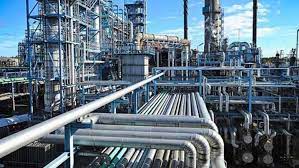 16 January 2014, Lagos – The net Foreign Direct Investment (FDI) inflows to African countries grew by 16.2 per cent to $43 billion in 2013, the World Bank has revealed.
16 January 2014, Lagos – The net Foreign Direct Investment (FDI) inflows to African countries grew by 16.2 per cent to $43 billion in 2013, the World Bank has revealed.
The multilateral institution stated this in its “Global Economic Prospects,” obtained yesterday. According to the World Bank, most of the funds into the country went to the natural resources sector, supporting exploration and production in oil, gas and mining.
The report however pointed out that FDI flows to the non-resource sector also increased, citing the service sector, where it noted that rising consumer incomes buoyed activities in telecommunication, finance, retail and transportation. Furthermore, the Washington-based lender, stated in the report that consumer-oriented FDI projects in manufacturing and services expanded rapidly in recent years.
“As a result, their share in the total value of FDI Greenfield projects in the region has risen from about seven per cent in 2008, to 23 per cent in 2012,” it added.
According to the World Bank, Sub-saharan Africa’s real Gross Domestic Product (GDP) growth picked up to 4.7 per cent in 2013. This, it said was supported by robust domestic demand, notably investment growth.
“Strengthening external demand is expected to support growth over the forecast horizon with regional GDP growth projected to improve to 5.3 per cent in 2014, rising to 5.5 per cent in 2016.
“However, a protracted decline in commodity prices, tighter global financing conditions and domestic risks including political unrest, and weather shocks could weaken growth prospects,” it explained.
Nevertheless, the report showed that excluding South Africa, GDP growth for the rest of the region averaged six per cent in 2013, adding that about a third of African countries grew by six per cent or more in 2013.
But it expressed concern over widespread poverty and high unemployment rate in the region.
“Fiscal deficits widened in 2013 and debt-to-GDP ratios continued to rise across the region. After more than doubling in 2012, fiscal deficits are estimated to have deteriorated further by 0.3 percent points in 2013, with the largest deterioration occurring among oil exporters and low-income countries.
For most countries in the region, fiscal consolidation is needed not only to help create fiscal space for development spending , but also to start rebuilding fiscal buffers to minimise exposure to external headwinds.
Remittance inflows to the region remained robust, estimated at $32 billion in 2013, up from 430 billion in 2012. These inflows, combined with lower food prices, supported household incomes and demand.
Commenting on its outlook for the region, the World Bank pointed out that countries such as Nigeria and Kenya that had recorded significant portfolio inflows in their respective securities markets would be affected by the reversal of capital flows as the United States Federal Reserve commences its planned tapering of asset purchases. The development, it also stressed may make countries planning to tap the international bond markets face higher coupons.
“Ongoing conflicts in northern Nigeria are also emerging as an important security problem that might adversely affect economic activity in the sub-region,” it added.
– This Day



